- Home
- H. P. Lovecraft
The Road to Madness
The Road to Madness Read online
THE ROAD TO MADNESS
All at once, from an arcaded avenue leading endlessly away, there came the daemoniac rattle and wheeze of a blasphemous organ, choking and rumbling out the mockeries of hell in a cracked, sardonic bass. In an instant every moving entity was electrified; the nightmare horde slithered away in quest of the sound—goat, satyr, and Ægypan, incubus, succubus, twisted toad and shapeless elemental—all led by the abominable naked phosphorescent thing that squatted on the carved golden throne, bearing in its arms the glassy-eyed corpse.
—From The Horror at Red Hook
On the tempest-racked night of November 8, 1921, with a lantern which cast charnel shadows, I stood digging alone and idiotically in the grave of Jan Martense. I had begun to dig in the afternoon, because a thunderstorm was brewing, and now that it was dark and the storm had burst above the maniacally thick foliage, I was glad.
The scene of my excavations would alone unnerve any ordinary man. Baleful primal trees of unholy size, age, and grotesqueness leered above me like the pillars of some hellish Druidic temple; muffling the thunder, hushing the clawing wind, and admitting but little rain. Illumined by faint flashes of filtered lightning rose the damp ivied stones of the deserted mansion, while somewhat nearer was the abandoned Dutch garden whose walks and beds were polluted by a white, fungous, foetid, over-nourished vegetation that never saw full daylight.
—From The Lurking Fear
“Lovecraft’s fiction is one of the cornerstones of modern horror.”
—Clive Barker
A Del Rey® Book
Published by The Random House Publishing Group
Compilation copyright © 1996 by Arkham House Publishers, Inc.
Introduction copyright © 1996 by Barbara Hambly
Interior Illustrations copyright © 1996 by John Jude Palencar
Copyright © 1939, 1943 by August Derleth and Donald Wandrei
All rights reserved.
Published in the United States by Del Rey Books, an imprint of The Random House Publishing Group, a division of Random House, Inc., New York, and simultaneously in Canada by Random House of Canada Limited, Toronto.
“Cool Air” and “The Terrible Old Man” previously appeared in The Dunwich Horror and Others, published by Arkham House Publishers, Inc. “Herbert West, Reanimator” previously appeared in Dagon and Other Macabre Tales, published by Arkham House Publishers, Inc. These revised versions were edited by S. T. Joshi. The other stories in this work were previously collected in The Doom That Came to Sarnath, The Lurking Fear and Other Stories, At the Mountains of Madness and Other Tales of Horror, and The Tomb and Other Tales, published by Ballantine Books by arrangement with Arkham House Publishers, Inc. This edition published by arrangement with Arkham House Publishers, Inc.
Del Rey is a registered trademark and the Del Rey colophon is a trademark of Random House, Inc.
www.delreybooks.com
Library of Congress Cataloging-in-Publication Data:
Lovecraft, H. P. (Howard Phillips), 1890–1937.
The transition of H. P. Lovecraft: the road to madness/H.P.
Lovecraft. — 1st ed.
p. cm.
“A Del Rey book.”
eISBN: 978-0-307-80769-4
1. Fantastic Fiction, American. 2. Horror tales, American.
I. Title.
PS3523.0833A6 1996
813′.52—dc20 96-2945
v3.1
Contents
Cover
Title Page
Copyright
INTRODUCTION: The Man Who Loved His Craft
by Barbara Hambly
Early Tales
The Beast in the Cave
The Alchemist
Poetry and the Gods
The Street
The Transition of Juan Romero
The Book (A Fragment)
Dagon
The Tomb
Memory
The White Ship
Arthur Jermyn
The Temple
The Terrible Old Man
The Crawling Chaos
The Tree
The Moon-Bog
Herbert West—Reanimator
The Lurking Fear
The Festival
The Unnamable
Imprisoned with the Pharaohs
The Shunned House
He
The Horror at Red Hook
Cool Air
Nathicana
At the Mountains of Madness
In the Walls of Eryx
The Evil Clergyman
Other Books by This Author
About the Artist
The Man Who Loved His Craft
A Guidebook to the Mountains of Madness by Barbara Hambly
I wish I could write like H.P. Lovecraft.
That’s not a fashionable thing to say in an era when writers are encouraged to strive for a “transparent” style—short, sleek, clear, without massive blocks of descriptive text—and many seem to have taken over the screenwriters’ dictum of “no paragraph over three lines long.”
And in many ways, the fascination of Lovecraft’s writing is not in his style.
Lovecraft was a man with a vision of the world: astonishing, macabre, intricate as a Giger drawing. His sense of cosmoses opening out of cosmoses, of dark abysses concealing in their hearts the entrances to further gulfs, infuses nearly everything he wrote with an atmosphere, not of horror, but of wonder. His worlds have an air of completeness. The civilizations he conjures and their denizens—the giant rugose cones in the steamy cities of pre-Cambrian Australia, the star-headed, barrel-shaped Antarctic radiates—may not have made a great deal of sense objectively, but they speak of histories, social structures, realities beyond our own.
This is the true stuff of fantasy.
Lovecraft had a master touch as a storyteller, a genius at what was revealed and when. This is clear even in his early, pseudo-Poe derivations, and his craft grew with the telling.
Even in his rare third-person narratives like “Haunter of the Dark” and, for all intents and purposes, “Call of Cthulhu,” he achieved the narrative voice of first-person, of someone caught within incomprehensible events and stumbling—with the reader’s own horror—upon the final, inevitable, and unspeakably incontrovertible evidence that the terror was, indeed, worse than they could have imagined.
The things that can be said about Howard Phillips Lovecraft don’t sum up, or even come close to summing up, what his writing is. On the down side, his writing is racist and sexist and wildly open to parody because it is so original, so idiosyncratic. (Some of his characters behave in a fashion that makes me want to knock them over the heads and yell, “Don’t go down into that cellar, you idiot!”)
But that isn’t the point.
I started reading Lovecraft when I was sixteen, and in many ways he was a major—perhaps the major—influence on my own writing. Every year or so I go on a Lovecraft binge, devouring story after story the way a glutton sits in a corner devouring cookies. Then I associate with those persons of more elevated tastes and feel a little ashamed of myself. But I meet the eyes of other Lovecraft addicts, and we smile.
Reading Lovecraft’s writing, one has the impression of a man so caught up in his vision that he is struggling to find language with which to share what he sees. Bizarre and elaborate words, piled atop one another in baroque cacophony, seem to be the only outlet he can find to convey the fulgent richness of his dream, to explain what is, at heart, inexplicable or at least incomprehensible: to name the nightmare.
To those of a certain temperament, that legion of my fellow addicts, H.P. Lovecraft’s tales are enormous fun.
Here we have a collection that combines some of his best tales with early or
fragmentary works. In many of the lesser-known stories we find themes or images that recur in later or better-known works, stories played out from other angles but returning again and again to the same core nightmares. The takeover of one’s body by some entity of the past in “The Evil Clergyman” provides a foreshadowing of “The Thing on the Doorstep” and “Shadow Out of Time”; the history of rumors and secret cult activity stirring beneath the prosaic, if squalid, surface of an everyday slum that we find in “The Horror of Red Hook” mirrors the dark spine of the tale “The Shadow Over Innsmouth.”
Another theme found in “The Shadow Over Innsmouth” resurfaces in “Arthur Jermyn” and is one of Lovecraft’s most notable preoccupations: “bad blood” or evil or alien ancestry, forgotten for a time, that returns to destroy an innocent scion of the family.
Part of this, of course, is simply Lovecraft’s racism, the racism that until quite recently could strip a fair-skinned man or woman of civil rights and bar all entry into polite society, should it be discovered that one of their great-grandparents came from Africa; the racism that painted half the villains and thugs of his stories as “Negroes,” “lascars,” or “degenerates of horribly mixed race.” (And let’s not forget those “degenerate Eskimos” featured in “Call of Chthulu”!)
But the somber glee with which he traces the enormities of the tainted Jermyn line reflects also a delight with genealogy, with the history of families and the places that bear their stamp across the generations: the abominable de la Poers of Exham Priory, the gruesome descendants of Captain Marsh of Innsmouth. And indeed, Lovecraft’s villains were as likely to be Caucasians as anything else, degenerate or otherwise: men (at the moment I cannot think of a single Lovecraft story in which a woman was the linchpin of the plot’s evil—even Asenath Waite was actually a man) who delved for forbidden knowledge, acquired forbidden power, and surrendered their humanity in the process.
The image of the cursed family, the generational saga of evil, is a powerful one. And, as any fan of Romanov court histories or Dynasty can tell you, it’s powerful because it’s great, chewy fun.
As an historian, I cannot but revel in Lovecraft’s portrayal, again and again, of eldritch evil arising from the deeps of time. His thesis that humanity is but a blundering set of Johnny-come-lately peasants stumbling amid the terrible secrets of unknown Ancients opens the door to endless narrative possibilities. His catalog of forbidden lore—those yellowing fragments of parchment that the hero or the villain has to collate, the hideous volumes that it is not lawful even to possess—all bear wonderfully evocative titles: von Juntzt’s Unaussprechlichen Kulten, Ludvig Prinn’s De Vermis Mysteriis, and the unforgettable Necronomicon of the Mad Arab Abdul Alhazred. What bibliophile wouldn’t delight in displaying such things on his or her library shelves?
Lovecraft’s heroes and villains both tend to be scholars, treading the dangerous territory of forbidden knowledge, and many of Lovecraft’s greatest stories derive their tension from the scholarly unfolding of information, the coming to light of hidden records and hidden deeds.
I’m still not sure that any of this explains the fascination of Lovecraft, the power that his images and themes exert over so much of the literature of horror and the fantastic, over role-playing games and films both gruesome and comic (including the marvelously Lovecraftian Ghostbusters) sixty years after the man’s death.
But the influence is there. My fellow addicts are there. At a recent science fiction convention in Chicago nearly a thousand fans participated in a Lovecraftian role-playing game without anyone inquiring “Who?” (I was one of a dozen professionals slaughtered in eldritch and nameless circumstances, and it took all afternoon to get the fake blood out of my hair.) Lovecraft’s mythos is a standard part of the language of horror literature. Used bookstore owners tell me they can’t keep Lovecraft on the shelves.
Maybe it’s just that Lovecraft takes such obvious pleasure in what he writes. Enthusiasm is contagious. He was clearly a man who loved his craft.
This book, in many ways, is a progression, a journey. The stories serve as an illustration of H.P. Lovecraft’s progress from derivative pseudo-Poe, pseudo-Dunsany tales, some of them collaborations, to his own astonishing goals. In addition to the earlier fragments and stories, we see Lovecraft’s flights into less characteristic realms: “The White Ship” and “The Tree” are very much high fantasy; “The Shunned House” is a flat-out ghost story; “Cool Air,” one of my favorites, is a simple tale of gruesome horror, and “In the Walls of Eryx” is one of Lovecraft’s few excursions into outright science fiction. “Imprisoned With the Pharoahs,” aside from being a great deal of Indiana Jones-style fun, is interesting in that it purports to be written by escape artist and supernaturalist Harry Houdini, probably the only time Lovecraft wrote from the point of view of a real celebrity.
But from those early attempts and collaborations, and through the odd byways, we progress to his more mature, more confident, and more elaborate works, until like the unfortunate Professor Dyer, we arrive at last at the Mountains of Madness—classic Lovecraft, like a perfectly wrought black crystal—and find ourselves in strange and wondrous territory indeed.
These stories comprise a guidebook, then, to the lesser-known corners of the universe of shadows that was H.P. Lovecraft’s private vision of the world. Some of its nooks he only visited once. To others, he returned again and again, drawn by whatever it is that dwells in that darkness—as we all are drawn.
Early Tales
Apart from some inconsequential juvenilia written beginning when he was six years old, H. P. Lovecraft preserved only a few of what he called his early tales—that is, stories written in his teens and twenties—having destroyed most of them. These tales are manifestly early stories, uncertain and imperfect, written after a period during which he had put down little fiction.
The earliest of these narratives dates back to Lovecraft’s fifteenth year, and presumably all but The Transition of Juan Romero were written when he was between fifteen and twenty. The Transition of Juan Romero was written when Lovecraft’s interest in fiction, some years dormant, was once more revived, and only a few years before he began to write the main body of his fiction.
Since these early tales, particularly The Beast in the Cave and The Alchemist, show great promise, it is only to be speculated about whether that early promise would have been fulfilled sooner had Lovecraft’s fiction then earned the encouragement it merited. He lost here at least a decade of his creative life, when, discouraged in his late teens, he abandoned the writing of fiction almost until the advent of Weird Tales.
The Beast in the Cave
The horrible conclusion which had been gradually obtruding itself upon my confused and reluctant mind was now an awful certainty. I was lost, completely, hopelessly lost in the vast and labyrinthine recess of the Mammoth Cave. Turn as I might, in no direction could my straining vision seize on any object capable of serving as a guide-post to set me on the outward path. That nevermore should I behold the blessed light of day, or scan the pleasant hills and dales of the beautiful world outside, my reason could no longer entertain the slightest unbelief. Hope had departed. Yet, indoctrinated as I was by a life of philosophical study, I derived no small measure of satisfaction from my unimpassioned demeanour; for although I had frequently read of the wild frenzies into which were thrown the victims of similar situation, I experienced none of these, but stood quiet as soon as I clearly realised the loss of my bearings.
Nor did the thought that I had probably wandered beyond the utmost limits of an ordinary search cause me to abandon my composure even for a moment. If I must die, I reflected, then was this terrible yet majestic cavern as welcome a sepulchre as that which any churchyard might afford, a conception which carried with it more of tranquillity than of despair.
Starving would prove my ultimate fate; of this I was certain. Some, I knew, had gone mad under circumstances such as these, but I felt that this end would not be mine. My disaster was th
e result of no fault save my own, since unknown to the guide, I had separated myself from the regular party of sightseers; and, wandering for over an hour in forbidden avenues of the cave, had found myself unable to retrace the devious windings which I had pursued since forsaking my companions.
Already my torch had begun to expire; soon I would be enveloped by the total and almost palpable blackness of the bowels of the earth. As I stood in the waning, unsteady light, I idly wondered over the exact circumstances of my coming end. I remembered the accounts which I had heard of the colony of consumptives, who, taking their residence in this gigantic grotto to find health from the apparently salubrious air of the underground world, with its steady, uniform temperature, pure air, and peaceful quiet, had found, instead, death in strange and ghostly form. I had seen the sad remains of their ill-made cottages as I passed them by with the party, and had wondered what unnatural influence a long sojourn in this immense and silent cavern would exert upon one as healthy and vigorous as I. Now, I grimly told myself, my opportunity for settling this point had arrived, provided that want of food should not bring me too speedy a departure from this life.
As the last fitful rays of my torch faded into obscurity, I resolved to leave no stone unturned, no possible means of escape neglected; so, summoning all the powers possessed by my lungs, I set up a series of loud shoutings, in the vain hope of attracting the attention of the guide by my clamour. Yet, as I called, I believed in my heart that my cries were to no purpose, and that my voice, magnified and reflected by the numberless ramparts of the black maze about me, fell upon no ears save my own.
All at once, however, my attention was fixed with a start as I fancied that I heard the sound of soft approaching steps on the rocky floor of the cavern.
Was my deliverance about to be accomplished so soon? Had, then, all my horrible apprehensions been for naught, and was the guide, having marked my unwarranted absence from the party, following my course and seeking me out in this limestone labyrinth? Whilst these joyful queries arose in my brain, I was on the point of renewing my cries, in order that my discovery might come the sooner, when in an instant my delight was turned to horror as I listened; for my ever acute ear, now sharpened in even greater degree by the complete silence of the cave, bore to my benumbed understanding the unexpected and dreadful knowledge that these footfalls were not like those of any mortal man. In the unearthly stillness of this subterranean region, the tread of the booted guide would have sounded like a series of sharp and incisive blows. These impacts were soft, and stealthy, as of the paws of some feline. Besides, when I listened carefully, I seemed to trace the falls of four instead of two feet.

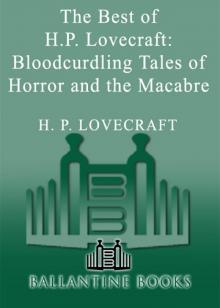 The Best of H.P. Lovecraft
The Best of H.P. Lovecraft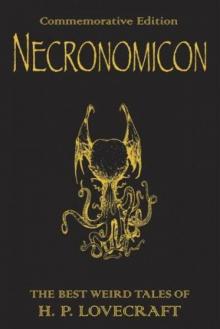 The Definitive H.P. Lovecraft: 67 Tales Of Horror In One Volume
The Definitive H.P. Lovecraft: 67 Tales Of Horror In One Volume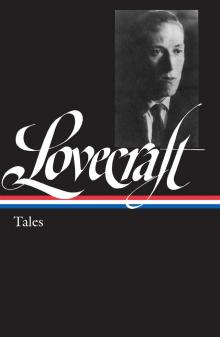 The Complete Works of H.P. Lovecraft
The Complete Works of H.P. Lovecraft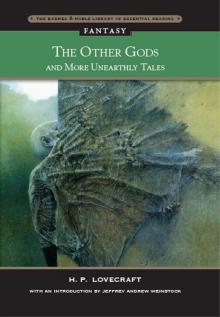 Other Gods and More Unearthly Tales
Other Gods and More Unearthly Tales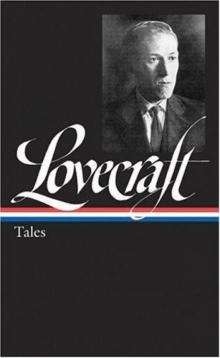 Lovecraft's Fiction Volume I, 1905-1925
Lovecraft's Fiction Volume I, 1905-1925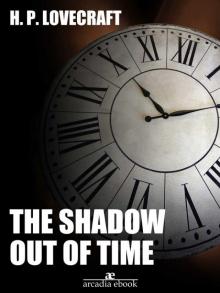 The Shadow Out of Time
The Shadow Out of Time The Shunned House
The Shunned House Lovecraft's Fiction Volume II, 1926-1928
Lovecraft's Fiction Volume II, 1926-1928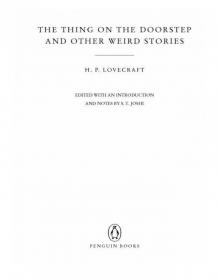 The Thing on the Doorstep and Other Weird Stories
The Thing on the Doorstep and Other Weird Stories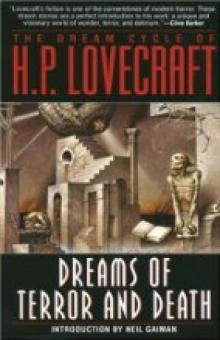 Dream Cycle of H. P. Lovecraft: Dreams of Terror and Death
Dream Cycle of H. P. Lovecraft: Dreams of Terror and Death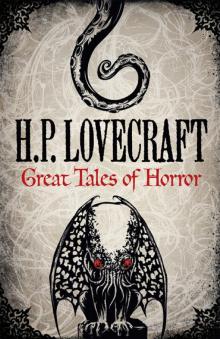 Great Tales of Horror
Great Tales of Horror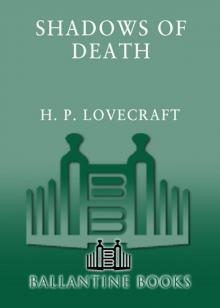 Shadows of Death
Shadows of Death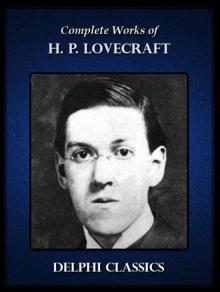 Delphi Complete Works of H. P. Lovecraft (Illustrated)
Delphi Complete Works of H. P. Lovecraft (Illustrated)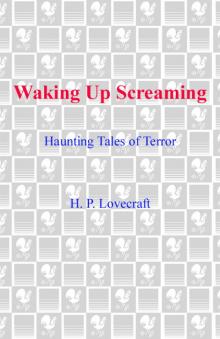 Waking Up Screaming: Haunting Tales of Terror
Waking Up Screaming: Haunting Tales of Terror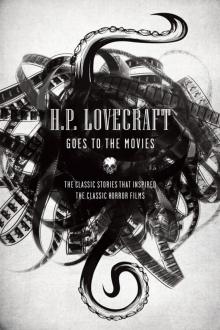 H.P. Lovecraft Goes to the Movies
H.P. Lovecraft Goes to the Movies The Road to Madness
The Road to Madness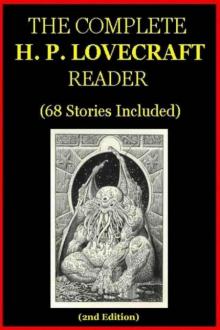 The Complete H.P. Lovecraft Reader (68 Stories)
The Complete H.P. Lovecraft Reader (68 Stories)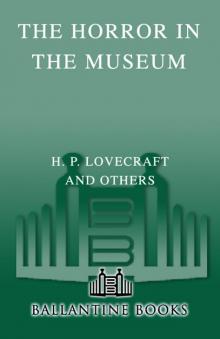 The Horror in the Museum
The Horror in the Museum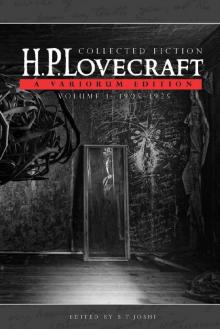 Collected Fiction Volume 1 (1905-1925): A Variorum Edition
Collected Fiction Volume 1 (1905-1925): A Variorum Edition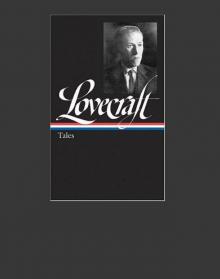 Lovecrafts_Fiction, vol.I_1905-1925
Lovecrafts_Fiction, vol.I_1905-1925 Writings in the United Amateur, 1915-1922
Writings in the United Amateur, 1915-1922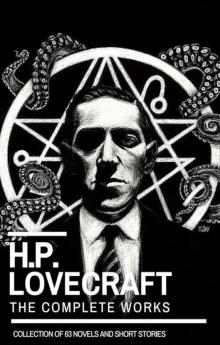 H.P. Lovecraft: The Complete Works
H.P. Lovecraft: The Complete Works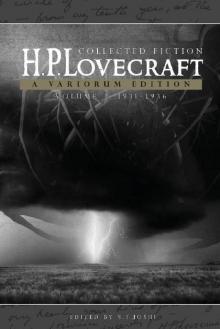 Collected Fiction Volume 3 (1931-1936): A Variorum Edition
Collected Fiction Volume 3 (1931-1936): A Variorum Edition H.P. Lovecraft: The Complete Fiction
H.P. Lovecraft: The Complete Fiction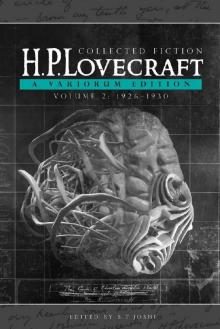 Collected Fiction Volume 2 (1926-1930): A Variorum Edition
Collected Fiction Volume 2 (1926-1930): A Variorum Edition Yog Sothothery - The Definitive H.P. Lovecraft Anthology
Yog Sothothery - The Definitive H.P. Lovecraft Anthology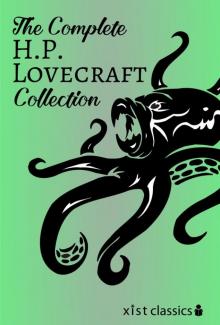 The Complete H.P. Lovecraft Collection (Xist Classics)
The Complete H.P. Lovecraft Collection (Xist Classics)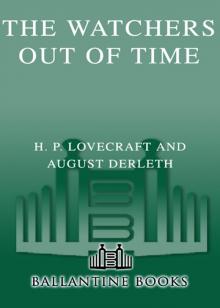 The Watchers Out of Time
The Watchers Out of Time Eldritch Tales
Eldritch Tales The Other Gods And More Unearthly Tales
The Other Gods And More Unearthly Tales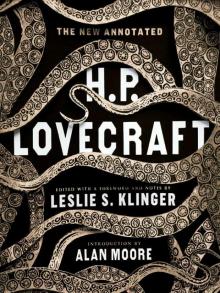 The New Annotated H. P. Lovecraft
The New Annotated H. P. Lovecraft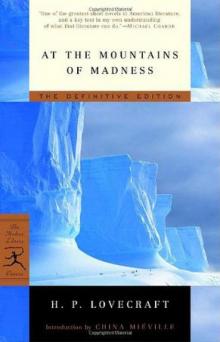 At the mountains of madness
At the mountains of madness Bloodcurdling Tales of Horror and the Macabre
Bloodcurdling Tales of Horror and the Macabre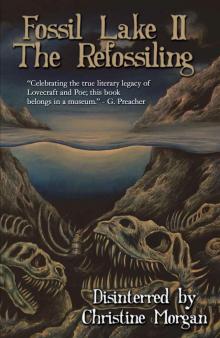 Fossil Lake II: The Refossiling
Fossil Lake II: The Refossiling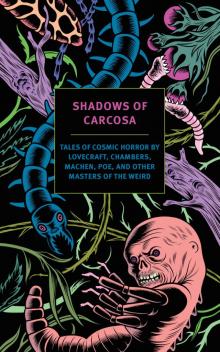 Shadows of Carcosa: Tales of Cosmic Horror by Lovecraft, Chambers, Machen, Poe, and Other Masters of the Weird
Shadows of Carcosa: Tales of Cosmic Horror by Lovecraft, Chambers, Machen, Poe, and Other Masters of the Weird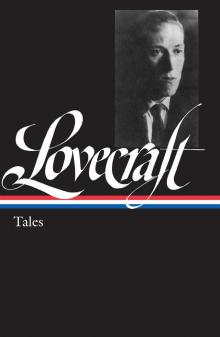 H. P. Lovecraft
H. P. Lovecraft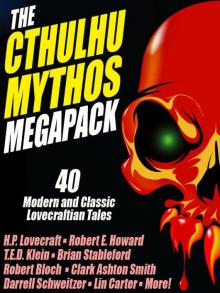 The Cthulhu Mythos Megapack
The Cthulhu Mythos Megapack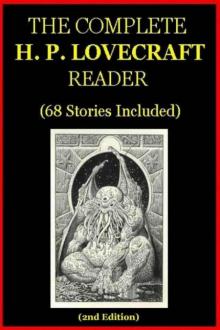 The Complete H. P. Lovecraft Reader (2nd Edition)
The Complete H. P. Lovecraft Reader (2nd Edition)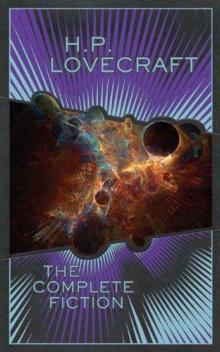 The Complete Fiction
The Complete Fiction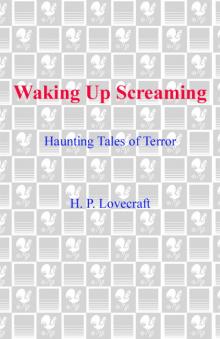 Waking Up Screaming
Waking Up Screaming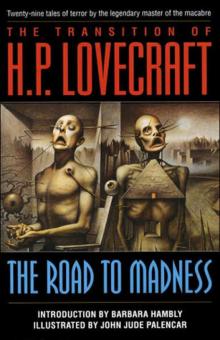 Transition of H. P. Lovecraft
Transition of H. P. Lovecraft![[1935] The Shadow Out of Time Read online](http://i1.bookreadfree.com/i2/04/12/1935_the_shadow_out_of_time_preview.jpg) [1935] The Shadow Out of Time
[1935] The Shadow Out of Time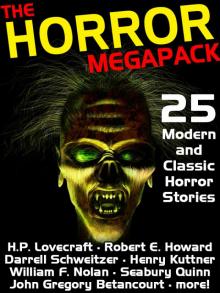 The Horror Megapack
The Horror Megapack